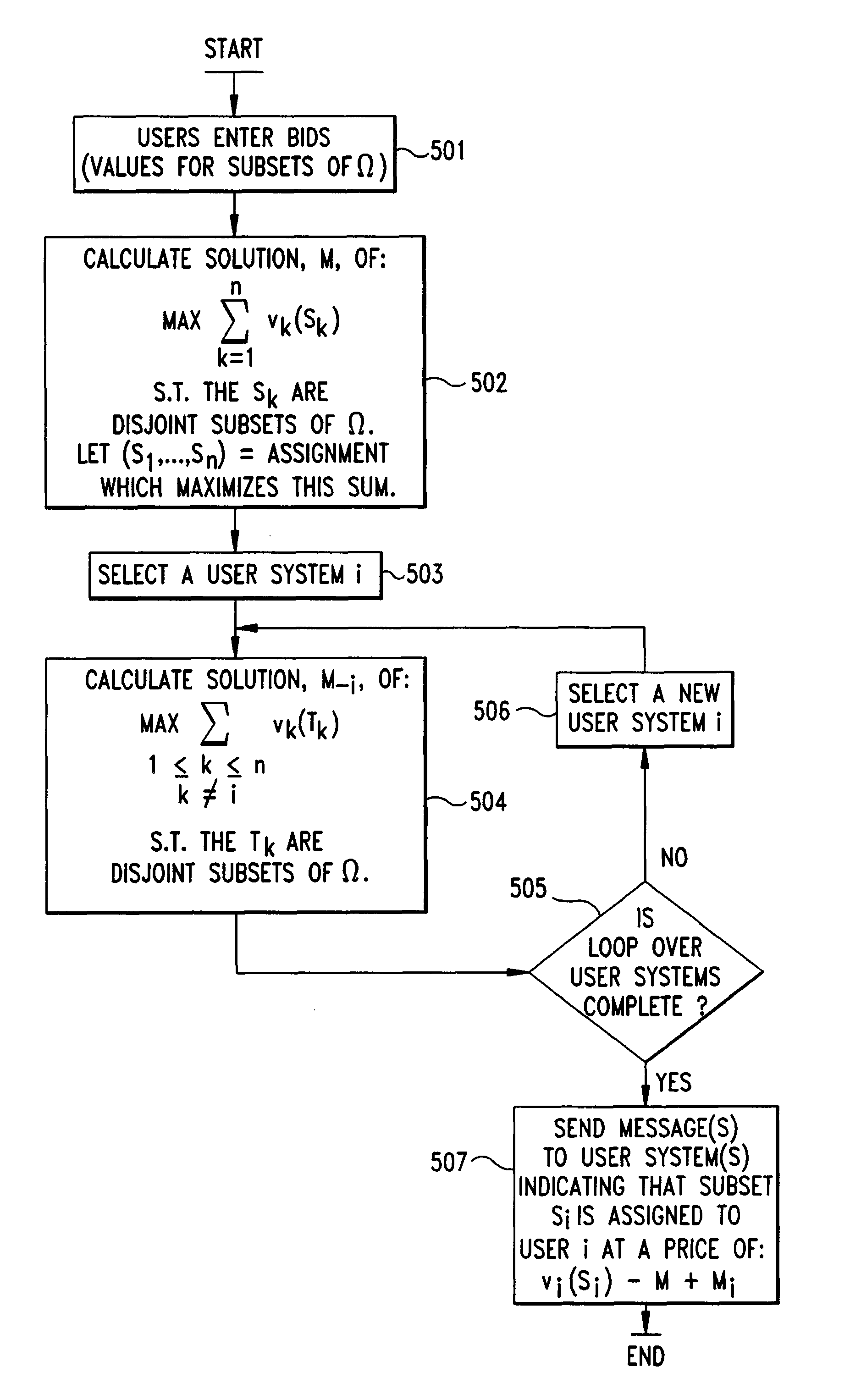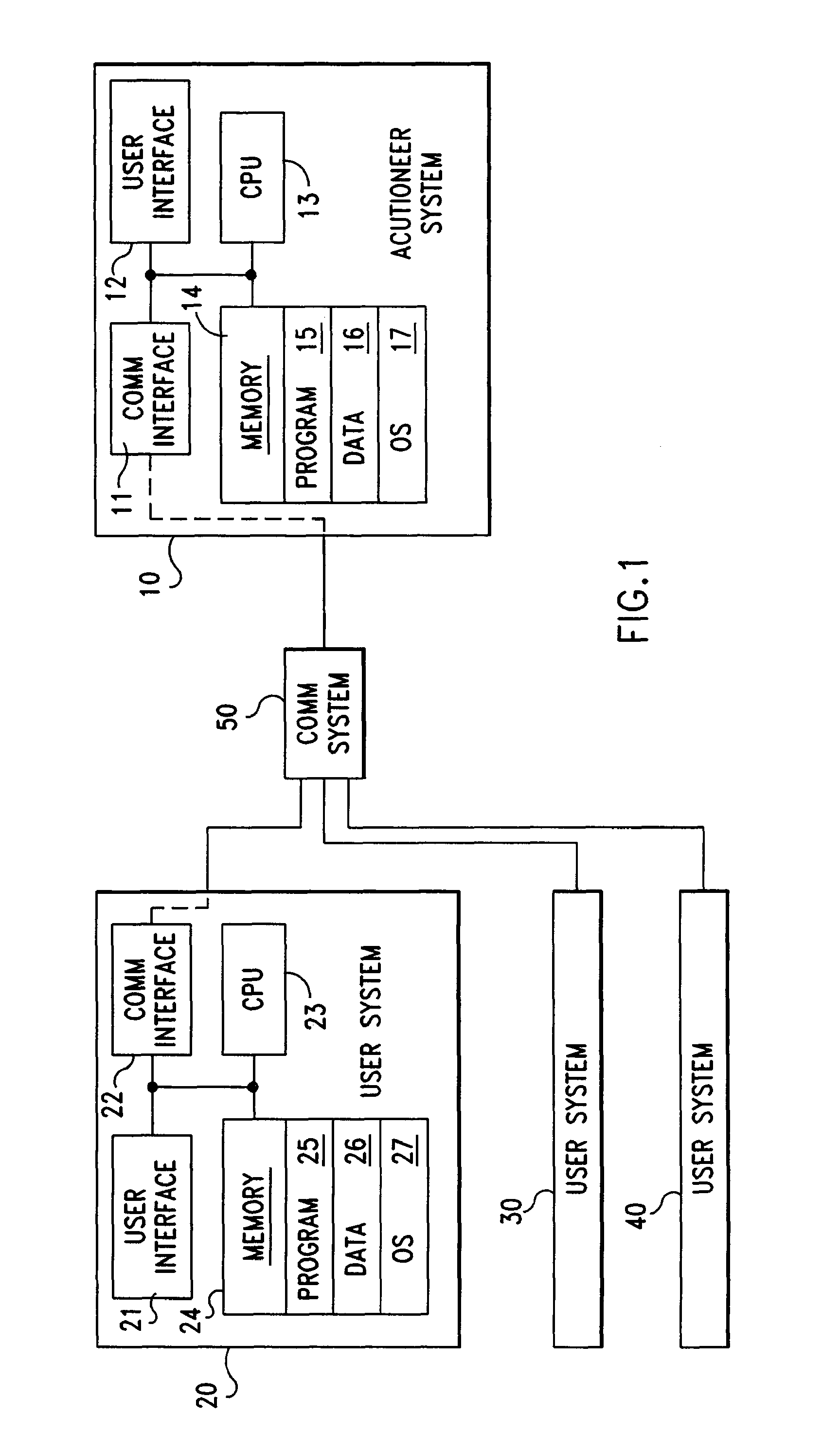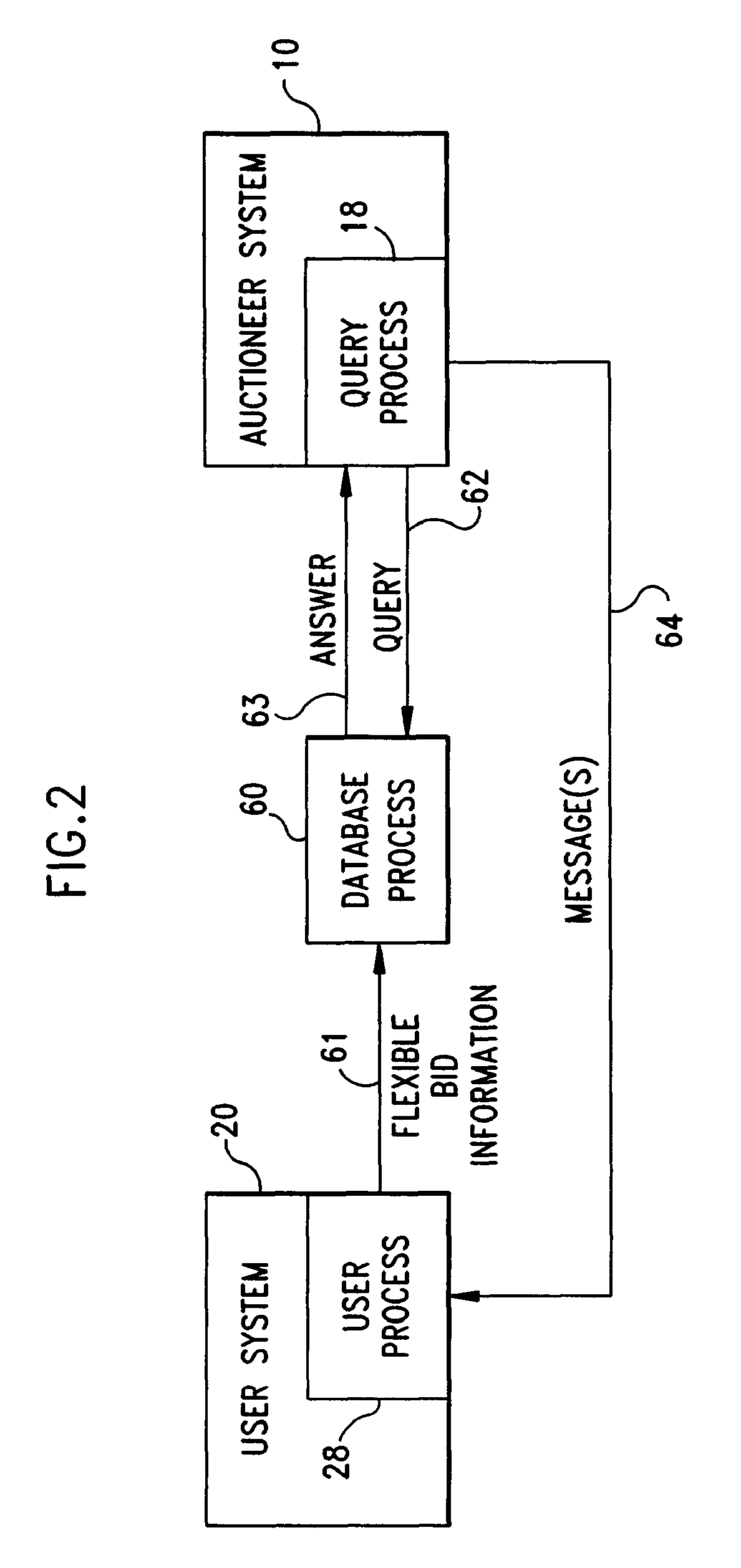Computer implemented methods and apparatus for auctions
a technology of computer implementation and auction, applied in the field of improving auctions, can solve the problems of affecting the success of auction, affecting the continued participation of bidders (and thus the success of auction) and requiring substantial time of bidders, and achieve the effect of faster pa
- Summary
- Abstract
- Description
- Claims
- Application Information
AI Technical Summary
Benefits of technology
Problems solved by technology
Method used
Image
Examples
example one
of the Invention's Application
[0066]Let us consider an elementary example out of a myriad of possible applications for the present invention, in order to give a clearer indication of its usefulness and operation. Suppose that a securities firm sought to sell shares of stock via an auction. The securities firm might announce, via a message, that it plans to begin the auction at a price of $10 per share, and then successively increment the price by $1 per share. At each price, the auctioneer will indicate the quantity of shares which are being offered, and bidders will indicate the quantity which they are willing to purchase. The auction concludes when the price reaches a level where supply equals demand: bidders are awarded shares according to the quantity which they demanded at the concluding price; bidders might be charged the concluding price for every unit that they win, or they might be awarded some of the shares at other prices [see my patent application for “System and Method ...
example two
of the Invention's Application
[0081]Let us consider a second example of a possible application for the present invention, again in order to give a clearer indication of its usefulness and operation. Suppose that a nation's central bank sought to simultaneously sell a fixed quantity of three-month and six-month treasury bills via a dynamic auction. The central bank might announce that it will begin by posting an interest rate of 5.40% for the three-month bill and 5.80% for the six-month bill, and proceed by reducing the interest rate by 0.01% on whichever bill is more oversubscribed, until supply equals demand for both bills.
[0082]Bidder 2, a government securities dealer, might be interested in purchasing $30 million in treasury bills, and might consider the reasonable difference between the interest rates for the three-month and six-month bills to be 0.30%. Thus, Bidder 2 might enter initial flexible bid information consisting of:
A quantity of $30 million in three-month bills and a ...
example three
of the Invention's Application
[0085]Let us consider a third example of a possible application for the present invention, again in order to give a clearer indication of its usefulness and operation. Suppose that a region's electric power pool sought to arrange for the production of electric power at various times of day via a dynamic auction. The power pool might announce that it will begin by posting a price of 10 cents per kilowatt-hour on each half-hour period of the day and indicate the quantity of power it desires at that price. It might then proceed by reducing the price by ½ cent per kilowatt-hour on one or more time periods which are heavily oversubscribed, also indicating the quantity of power desired at the new price. Bidders in this auction (electric power companies) might typically place bids with limitations of the form: “I am willing to supply x kilowatts of power during both the 9:00-to-9:30 am time slot and the 10:00-to-10:30 am time slot, but only if I can also suppl...
PUM
 Login to View More
Login to View More Abstract
Description
Claims
Application Information
 Login to View More
Login to View More - R&D
- Intellectual Property
- Life Sciences
- Materials
- Tech Scout
- Unparalleled Data Quality
- Higher Quality Content
- 60% Fewer Hallucinations
Browse by: Latest US Patents, China's latest patents, Technical Efficacy Thesaurus, Application Domain, Technology Topic, Popular Technical Reports.
© 2025 PatSnap. All rights reserved.Legal|Privacy policy|Modern Slavery Act Transparency Statement|Sitemap|About US| Contact US: help@patsnap.com



